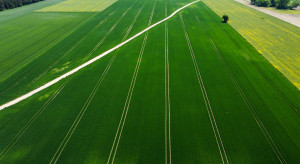Last season, some sites saw significant savings in fertilization. In the next agrotechnical season it will be more difficult.
- Soon the combines will start harvesting barley, rapeseed and the earliest wheat. After a small harvest, it is worth performing soil tests.
- The cost of samples is low and the benefits are high.
You won’t cheat the earth two years in a row
The previous season was marked by savings on many farms, forced by the high costs of purchasing fertilizers and, at the same time, low prices of agricultural produce. This season, the correlation is also not favorable, because although fertilizers are cheaper, it is not enough to talk about a good price ratio of agricultural produce to multi-component or nitrogen fertilizers. However, after savings last season, when not only lower doses were used, but multi-component fertilizers were often not applied at all (especially to winter cereals), supplementing nutrients may be necessary. Sure, profitability is still conventional, but soil depletion does not lead to anything good. Even in good jobs, shortages can be high. Many farmers say that The earth cannot be cheated two years in a row.
Nitrogen will be poorly utilized in impoverished soil
From a practical point of view, low levels of phosphorus and potassium will be a problem already in autumn. Please note, however, that the problem will return with a vengeance in the next spring. Without nitrogen there is no crop. Meanwhile, for nitrogen to be properly used, the soil must be adequately supplied with other macroelements. Therefore, when applying N doses for a specific yield, a large part, depending on the level of deficiency, will be unused. Let us also note here that the test results will also – and perhaps above all – allow us to determine the pH. And it all starts with pH, including the use of macroelements other than nitrogen. In the case of regular liming, we can be relatively calm about the reaction. However, if fertilization with this ingredient is performed once every 4 years, the situation may vary. Please note that theoretically, administering calcium once every four seasons is the minimum necessary. However, in weaker soils, but also in strong ones with good yields, the pH level will be low at such a frequency.
Basic soil testing allows you to obtain fundamental information. We have a certain amount of phosphorus, potassium, magnesium and calcium in the soil. On the one hand, such research is an absolute minimum, but on the other hand it is sufficient to optimize fertilization.
The cost of a sample is low – for several years now the price for one sample has been PLN 13.12. It is worth doing them as soon as possible after harvesting, because we will not receive the results overnight. The waiting time for the test result sometimes exceeds a month.
Once every four years is not enough
Let’s see that the trial recommendations state a certain minimum threshold. Tests should be performed at least once every four years. In fact, however, it will be much more reliable if we perform such tests once every two years. This frequency will primarily allow for cost optimization. On the one hand, four years for the soil is short, because the soil’s work must be assessed as a strategy for years. On the other hand, in the context of nutrient abundance, this is too long a period. With crops, we take a lot out of the soil, but do we leave the right amount? This year may be crucial in a sense, because – as we have already mentioned – significant savings were made last season. Everyone must answer the question for themselves whether to buy multi-component fertilizers and what will be best for a given position. However, we know that regardless of the farm and location – only knowledge of the soil content and its quality will allow us to make an informed decision. If we do not know the content of the soil, we are groping in the dark.
– .


